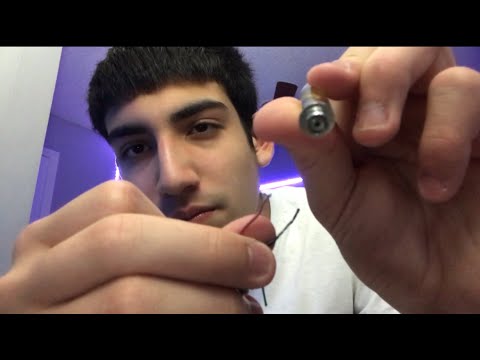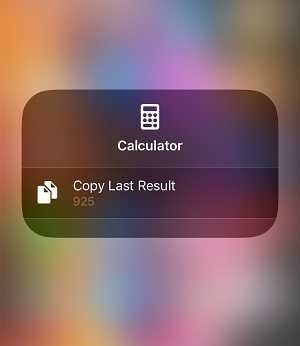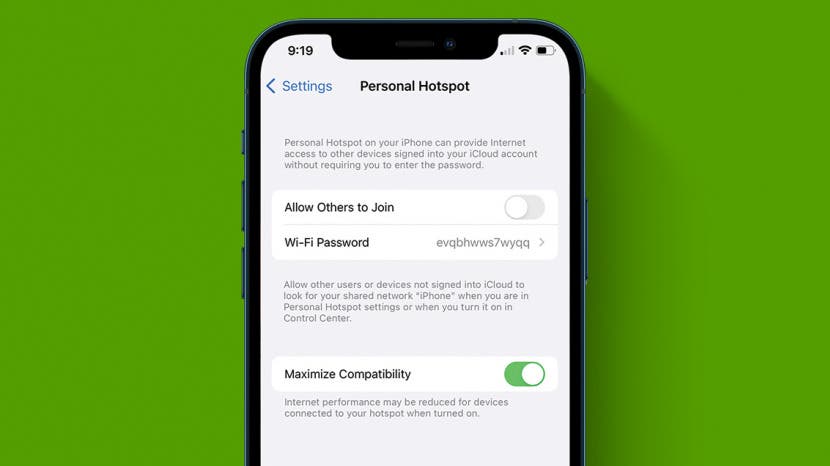Does Amazon Check Serial Numbers on Returns? [Answered]
Does Amazon Check Serial Numbers on Returns? These are What You Need to Know
![Does Amazon Check Serial Numbers On Returns? [Answered] Does Amazon Check Serial Numbers On Returns?](https://techcult.com/wp-content/uploads/2023/01/Does-amazon-check-serial-numbers-on-returns.png)
If you are an Amazon customer, you may have wondered what happens when you return a product to the online giant. Does Amazon check the serial numbers on returns? How do they verify the condition and authenticity of the returned items? What are the consequences of returning too many products or committing return fraud?
In this blog post, I will answer all these questions and more. Iwill also provide some tips on how to avoid getting flagged by Amazon for excessive or fraudulent returns. Let’s get started!
Table of Contents
What is a Serial Number and Why is it Important?
A serial number is a unique code that identifies a specific product. It is usually printed on a label or engraved on the product itself. Serial numbers are used by manufacturers and retailers to track the production, distribution, warranty, and service of their products.
Serial numbers are important for several reasons:
- They help prevent counterfeiting and piracy of products.
- They help customers prove ownership and claim warranty or repair services.
- They help sellers verify the authenticity and condition of returned products.
Does Amazon Check Serial Numbers on Returns?
The answer is: it depends.
Amazon does not have a fixed policy or procedure for checking serial numbers on returns. Instead, they use various factors to decide whether or not to inspect a returned product and how thoroughly to do so.
Some of these factors are:
- The price of the product: The more expensive the product is, the more likely it is to be checked by Amazon. This is because Amazon wants to minimize its losses from refunds and prevent return fraud, such as swapping old products for new ones or returning counterfeit items.
- The return history of the customer: The more products a customer returns, the more likely they are to be flagged by Amazon. This is because Amazon wants to discourage excessive returns and detect return abuse, such as buying products for temporary use or trying out multiple products to keep only one.
- The condition of the product: The more damaged or defective the product is, the more likely it is to be checked by Amazon. This is because Amazon wants to verify the cause and extent of the damage and determine whether it was intentional or accidental.
- The category of the product: Some product categories are more prone to return fraud than others, such as electronics, jewelry, clothing, or beauty products. These products may have serial numbers, IMEI numbers, barcodes, or other identifiers that can be used to track and verify them.
So, how does Amazon check serial numbers on returns?
Amazon uses different methods to check serial numbers on returns, such as:
- Scanning the barcode of the product: This is the most common and basic method that Amazon uses to identify a product and its details, such as price, seller, date of purchase, etc.
- Comparing the serial number of the product with the one on record: This is a more advanced and specific method that Amazon uses to ensure that the product returned is the same one that was sold. This can help prevent return fraud, such as swapping old products for new ones or returning counterfeit items.
- Checking other identifiers of the product, such as IMEI numbers, model numbers, color codes: This is another way that Amazon can verify the authenticity and condition of a product, especially for electronics or other complex products.
Meanwhile, these methods are not foolproof or consistent. Sometimes, Amazon may not check serial numbers on returns at all, either because they don’t have enough time or resources to do so, or because they trust the customer or seller enough to accept their return without inspection.
What are the Consequences of Returning Too Many Products or Committing Return Fraud?
Returning too many products or committing return fraud can have serious consequences for both customers and sellers.
For customers, some of these consequences are:
- Getting flagged by Amazon: If you return too many products or abuse the return policy in any way, Amazon may flag your account and monitor your future purchases and returns more closely. You may also receive a warning email from Amazon informing you of your high return rate and asking you to reduce it.
- Getting banned by Amazon: If you continue to return too many products or commit return fraud after being flagged or warned by Amazon, they may suspend or terminate your account permanently. This means you will lose access to all your orders, wish lists, reviews, Prime benefits, etc.
- Getting sued by sellers: If you return counterfeit items or swap old products for new ones, you may face legal action from the sellers who sold you those products. They may sue you for damages, losses, or breach of contract.
For sellers, some of these consequences are:
- Losing money and reputation: If you accept too many returns or refund fraudulent returns without checking them properly, you may lose money from refunds and shipping costs. You may also lose your reputation as a trustworthy seller and receive negative feedback or ratings from customers.
- Getting penalized by Amazon: If you sell counterfeit items or swap old products for new ones, you may face penalties from Amazon, such as suspension or termination of your seller account, removal of your listings, withholding of your payments, etc.
- Getting sued by customers: If you sell defective or damaged products or refuse to accept legitimate returns, you may face legal action from the customers who bought those products. They may sue you for compensation, replacement, or refund.
Getting worried about your registry gift ? See how to track Amazon registry gift now!
How to Avoid Getting Flagged or Banned by Amazon for Excessive or Fraudulent Returns?
If you want to avoid getting flagged or banned by Amazon for excessive or fraudulent returns, here are some tips to follow:
- Only buy products that you need and intend to keep. Don’t buy products for temporary use or to try out multiple options. If you are not sure about a product, read the reviews, compare the features, or ask the seller for more information before buying it.
- Only return products that are eligible and within the return window. Don’t return products that are not covered by the return policy or that have passed the return deadline. Check the product details and the return policy carefully before buying and returning a product.
- Only return products that are in the original condition and packaging. Don’t return products that are damaged, defective, used, altered, or missing any parts or accessories. Pack the product securely and include all the original documents, such as receipts, invoices, warranty cards, etc.
- Only return products that are authentic and match the serial number on record. Don’t return counterfeit items or swap old products for new ones. Verify the serial number of the product before returning it and make sure it matches the one on your order confirmation or invoice.
- Be honest and respectful when returning a product. Don’t lie about the reason or condition of the return. Don’t abuse the return policy or take advantage of the seller’s goodwill. Explain your issue clearly and politely and provide any evidence or proof if requested.
FAQs
Here are some frequently questions that people also ask about Amazon returns and serial numbers:
How do I find the serial number of my product?
The serial number of your product may be located in different places depending on the type and brand of the product. Some common places to look for serial numbers are:
- On the product itself. The serial number may be printed on a label or engraved on the back, bottom, side, or inside of the product.
- On the packaging of the product. The serial number may be printed on a sticker or barcode on the box, bag, or case of the product.
- On the documents of the product. The serial number may be printed on the receipt, invoice, warranty card, user manual, or certificate of authenticity of the product.
How do I check if my product is authentic?
There are different ways to check if your product is authentic depending on the type and brand of the product. Some common ways to check for authenticity are:
- Comparing the serial number of the product with the one on record. You can contact the manufacturer or seller of the product and ask them to verify the serial number for you.
- Checking other identifiers of the product, such as logos, labels, holograms, seals, etc. You can compare them with the official images or descriptions of the product from the manufacturer’s website or catalog.
- Testing the functionality and quality of the product. You can check if the product works as expected and meets the standards and specifications of the original product.
How do I contact Amazon customer service?
There are different ways to contact Amazon customer service depending on your issue and preference. Some common ways to contact Amazon customer service are:
- Online chat. You can chat with an Amazon representative online through their website or app. You can access this option by clicking on “Help” at the bottom of any page and then selecting “Contact Us”.
- Phone call. You can call Amazon customer service at 1-888-280-4331 (US) or 1-206-922-0880 (International). You can also request a call back from Amazon through their website or app.
- Email. You can email Amazon customer service. You can also send an email through their website or app by clicking on “Help” at the bottom of any page and then selecting “Contact Us”.
Conclusion
I hope that I’ve provided an answer your question: does Amazon check serial numbers on returns?
As you can see, Amazon does not have a fixed rule for checking serial numbers on returns. Instead, they use various factors to decide whether or not to inspect a returned product and how thoroughly to do so.
However, returning too many products or committing return fraud can have serious consequences for both customers and sellers.
Therefore, it is advisable to follow some tips to avoid getting flagged or banned by Amazon



![How To Delete Grindr Account? [Easy Step] How To Delete Grindr Account? [Easy Step]](https://whitekind.com/wp-content/uploads/2022/04/hqdefault-17.jpg)
